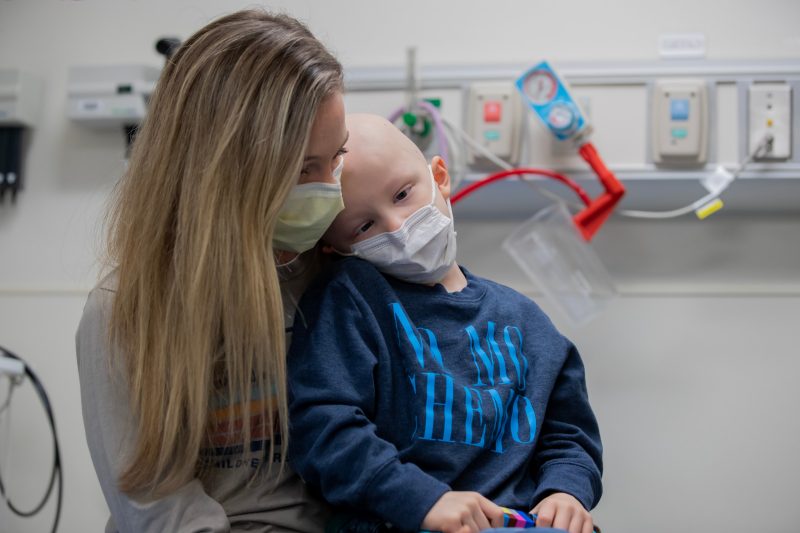In healthcare, data drives decisions, expertise saves lives, and treatments define outcomes. But behind every diagnosis, every procedure, and every recovery is a story that brings depth and meaning to a patient's journey.
Hospitals and medical practices don’t just provide care; they witness countless stories of resilience, breakthroughs, and human perseverance. From a surgeon reflecting on a life-changing procedure to a patient sharing their journey through recovery, storytelling transforms healthcare from a list of treatments into real, personal experiences.
For healthcare providers and hospitals, telling these stories the right way matters. It builds credibility, fosters trust, and helps patients, families, and even medical staff connect with the bigger picture of medicine beyond charts and statistics. Whether through patient testimonials, behind-the-scenes glimpses into the dedication of healthcare workers, or narratives of innovation, storytelling is a powerful tool to humanize the work being done every day.

Why Storytelling Matters in Healthcare
Healthcare can be intimidating, fast-paced, and overwhelming, with patients and providers navigating complex systems and high-stakes decisions. However, storytelling brings warmth and relatability to healthcare, shifting the focus from procedures and policies to the people whose lives are impacted.
A powerful story can transform a cold institution into a place of compassion, trust, and understanding, making healthcare feel more human and accessible.
1. Build Trust and Strengthen Patient Relationships
Trust is the foundation of effective healthcare. Patients don’t just rely on medical expertise—they need to feel safe, understood, and confident in their care. Storytelling builds that trust by highlighting the dedication, empathy, and expertise of healthcare professionals.
- Stories of doctors, nurses, and caregivers going the extra mile reassure patients that they are in capable and compassionate hands.
- When patients share their journeys, others see real people navigating similar health challenges, making the process more relatable and reassuring.
- When hospitals share stories, it signals that patients are active participants in their healthcare journey, not just passive recipients of treatment.
When patients see the human side of medicine, they feel more engaged, more at ease, and more willing to trust their providers. A single patient story can turn skepticism into confidence and make healthcare feel less transactional.
2. Empower Patients Through Shared Experiences
For many, medical diagnoses and treatments can feel overwhelming and isolating. Storytelling helps patients find connection, clarity, and confidence by showing them they're not alone.
- A patient’s journey through treatment provides a relatable way to explain conditions, treatment options, and recovery expectations.
- Seeing others who have overcome similar challenges reassures patients and helps them visualize a positive outcome.
- Personal stories about early screenings, lifestyle changes, or preventative care motivate others to take action on their health.
A well-told patient story is more than just inspiring, it’s informative and actionable. It helps patients understand their options and become more proactive in their care.
3. Reduce Anxiety and Fear Around Procedures
The unknown can be one of the biggest fears in healthcare—whether it’s undergoing surgery, receiving a diagnosis, or starting a treatment plan. Stories help demystify the experience and provide emotional reassurance.
- Hearing from others who have gone through similar procedures successfully can ease fears and instill confidence.
- Breaking down complex medical processes into relatable, digestible experiences makes them feel less intimidating.
- When loved ones know what’s ahead, they can better support the patient, reducing overall stress and uncertainty.
By sharing success stories and personal insights, healthcare providers can replace fear with understanding, ensuring that patients feel more prepared and at ease.
4. Promote Empathy and Understanding Among Healthcare Providers
Healthcare is demanding, and professionals often face emotional burnout, high-pressure situations, and long hours. Storytelling allows them to step back and reconnect with the human side of their work, reinforcing their purpose and passion.
- Real stories help providers understand the fears, frustrations, and hopes of those they treat, fostering greater empathy.
- Reminding medical professionals why they chose this field in the first place can boost morale and motivation, especially in challenging moments.
- Sharing stories among medical teams builds stronger connections, encourages collaboration, and reinforces a sense of shared purpose.
When healthcare workers engage with patient stories, they don’t just improve patient experiences—they also enhance their own sense of fulfillment, creating a more compassionate and supportive healthcare environment.

Storytelling Techniques for Healthcare Providers
A well-crafted story in healthcare isn’t just about delivering information—it’s about making an impact. Effective storytelling allows hospitals to connect with patients, showcase expertise, and reinforce the compassionate side of medicine.
However, storytelling in healthcare must strike a balance between professionalism and emotional resonance, ensuring that narratives educate, inspire, and build trust.
Here are key storytelling techniques that can help healthcare providers communicate with authenticity and clarity.
1. Patient Testimonials: The Power of Real-Life Experiences
There is no stronger endorsement of quality healthcare than hearing from a patient whose life has been saved. Personal testimonials humanize medical care, turning a hospital or practice into a place of hope, healing, and expertise.
- Feature videos or written testimonials where patients share their firsthand experiences with treatment, recovery, and support.
- Highlight before-and-after transformations, focusing on resilience, gratitude, and the emotional impact of care.
- Use testimonials as educational tools, helping new patients understand treatment paths, recovery timelines, and what to expect during their journey.
Example: Cleveland Clinic’s “Patients Like Me” series showcases real patient stories, offering hope and encouragement to others facing similar medical challenges.

A well-told patient story does more than promote services; it reassures new patients and serves as a reminder of the meaningful work happening every day in healthcare.
2. Doctor and Nurse Narratives: Showcasing Compassion and Expertise
Behind every successful medical procedure or breakthrough is a dedicated team of doctors, nurses, and healthcare workers. Sharing their stories adds depth to a hospital’s reputation and reminds the public that healthcare is powered by people, not just technology and treatments.
- Share behind-the-scenes perspectives, offering insight into the daily challenges and triumphs of medical professionals.
- Feature stories of perseverance, such as doctors who found innovative treatments or nurses who provided exceptional bedside care.
- Reinforce the human side of medicine, demonstrating that healthcare providers are not just experts but also compassionate caregivers.
Example: The Mayo Clinic frequently highlights stories from its medical team, blending scientific advancements with personal patient care to showcase expertise without losing the human element.

By sharing these narratives, hospitals and medical practices can reinforce trust, inspire confidence, and attract both patients and top medical talent.
3. Focus on the Emotional Journey, Not Just Medical Facts
While data and outcomes are important, stories that capture emotion are what truly resonate with audiences. Patients and families remember how they felt during treatment—far more than they remember statistics.
- Illustrate the patient’s emotional transformation, from the initial uncertainty of diagnosis to the triumph of recovery.
- Include family perspectives, showing how compassionate care impacts not just the patient, but their loved ones as well.
- Use accessible and engaging language, avoiding complex medical jargon that could make the story feel distant or difficult to follow.
Example: St. Jude Children’s Research Hospital focuses on the emotional and medical journeys of children, making their mission deeply personal and relatable.

When medical stories engage emotions, they leave a lasting impact, reinforcing trust and demonstrating the true value of compassionate care.
4. Utilize Different Formats for Greater Reach
Not everyone engages with content in the same way, so diversifying storytelling formats ensures broader reach and engagement. By using multiple formats, hospitals can meet audiences where they are and make stories more accessible and impactful.
- Video Testimonials: Short, high-quality patient stories create strong emotional engagement and are highly shareable.
- Blog Articles: Long-form stories allow for deeper narratives, exploring patient experiences, medical advancements, or behind-the-scenes care.
- Social Media Stories: Quick, impactful updates maintain ongoing engagement, offering bite-sized but powerful storytelling moments.
- Podcasts: In-depth interviews with doctors, nurses, and patients provide valuable conversations about healthcare experiences and insights.
By leveraging a mix of storytelling formats, healthcare providers can ensure their narratives reach and resonate with a wider audience, from patients and caregivers to medical professionals and policymakers.

The Ripple Effect of Humanized Healthcare
The power of storytelling in healthcare extends far beyond marketing campaigns. It has the ability to reshape public perception, reinforce trust in medical institutions, and inspire long-term change. When hospitals and medical practices share stories of success, compassion, and dedication, they don’t just inform—they influence how people view healthcare.
- Personal stories of early screenings, preventative care, and timely medical interventions can motivate people to take ownership of their health before conditions become critical.
- By openly sharing patient journeys and showcasing the compassion of healthcare professionals, hospitals can build a transparent and trusted reputation that resonates with patients and their families.
- Stories about dedicated doctors, resilient nurses, and life-changing treatments remind healthcare workers why medicine is a field driven by purpose, care, and human connection.
A humanized approach to healthcare isn’t just about treating illness—it’s about building relationships, instilling confidence, and inspiring hope. When patients feel heard, understood, and empowered, they are more likely to engage in their care, trust their providers, and share their positive experiences with others.
In the end, storytelling transforms healthcare from a service into a shared experience that connects providers, patients, and communities.
Summary: The Future of Storytelling in Healthcare
As technology advances, AI-driven narratives, digital platforms, and VR will open new possibilities for immersive, data-driven storytelling. Patient-led narratives will help ensure that personal experiences influence policy and education. The most effective stories will combine medical data with human emotion, making complex information more accessible while fostering deeper trust between providers and the communities they serve.
The future of healthcare storytelling is about bridging science and humanity. Hospitals and healthcare organizations that embrace this shift will not only strengthen their institutions but also help create a more compassionate, patient-centered industry—one human story at a time.
Ready to share the human side of your story? Let’s talk.
















Discussion